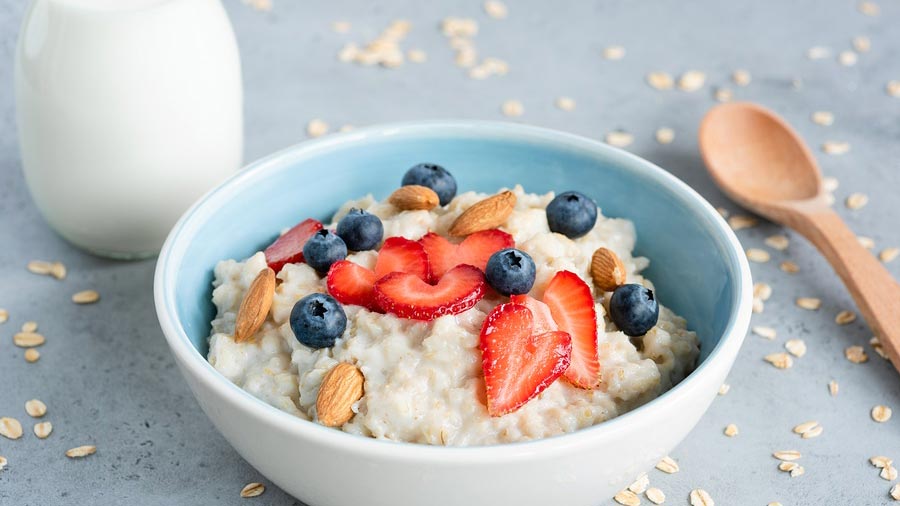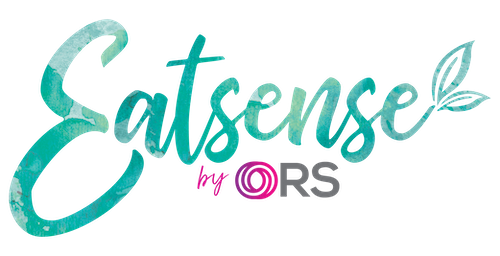
Blood pressure is the pressure of your blood on the walls of your arteries as your heart pumps it around your body. It is a vital part of how your heart and circulation works. Your blood pressure naturally goes up and down all the time, adjusting to your heart’s needs depending on what you are doing.1 High blood pressure is when your blood pressure is persistently higher than normal. Every one in three Australian adults has high blood pressure also known as hypertension.
Despite the risk of hypertension increasing with age, it can affect adults at across a wide range of ages. Hypertension is a serious health concern as it is one of the major risk factors for developing and dying from cardiovascular disease, a group of diseases that involve the heart and/or blood vessels and include Coronary Artery Disease, stroke and heart failure. At Eatsense, we know just how important the food on your fork can be when it comes to managing your blood pressure. In fact, lifestyle modifications, including healthier eating and regular exercise, can greatly reduce the number of patients who need to go on to blood pressure-lowering medication.
Here are our top tips for lowering blood pressure:
1. Go easy on the salt
Salt works on your kidneys to make your body hold on to more water. This extra stored water raises your blood pressure. It’s for this reason that excess salt consumption raises your blood pressure and reducing your salt (or sodium) intake is a good idea.
This can be achieved by:
- Limiting the amount of packaged, processed and canned foods you eat, and choosing fresh foods more often (especially fruits and vegetables)
- Choosing salt-reduced varieties of foods wherever possible
- Removing salt shakers from the table and in your cooking, and using herbs, spices, lemon or lime juice and vinegar to flavour meals
- Being label savvy and choosing low sodium foods that have less than 120mg of sodium per 100g
- Commercially made breads and crackers are high in sodium. Buy wholemeal or whole-grain bread from small bakers or specialty bread shops or try your hand at making your own!
Some may find that even after removing salt from their diet, their blood pressure remains the same. This is because some individuals are not salt-sensitive, meaning that they will not see a change in blood pressure even if their sodium intake varies. In cases such as this, it is still best to reduce your sodium intake where possible.
2. Rethink your drink
Studies show alcohol intake has a detrimental effect on blood pressure. A large study which included over 360,000 adults showed that men who averaged 1-2 drinks daily had an increased risk for hypertension compared to non-drinkers. Their risk increased as their alcohol intake increased. For women, hypertension risk began to increase at 3 or more drinks per day. Binge drinking has also been shown to be detrimental when it comes to high blood pressure too. Researchers from the Centers for Disease Control and Prevention looked at almost 4,000 current drinkers without hypertension and found that alcohol increased their blood pressure by 1 mmHg for every 10 grams consumed per day. The good news is that the effects of alcohol and high blood pressure are considered “rapidly reversible”.
3. Have a diet rich in fresh fruit and vegetables
Consuming enough fresh fruit, vegetables and wholegrains is key for having a healthy blood pressure. Regularly having 4-5 serves of vegetables is linked to a lower risk of high blood pressure.
This recommendation can be seen in the DASH (Dietary Approaches to Stop Hypertension) diet.
- The DASH diet emphasises the consumption of vegetables, fruits and whole grains while limiting foods high in saturated fat, sugar sweetened beverages and sweets.
- Dairy products, fish, poultry, beans and nuts are also emphasised.
- A major study which looked into the effects of the DASH diet compared to a diet high in sodium observed an 11.5 mm Hg drop in blood pressure for those with hypertension.
- All individuals with high blood pressure should increase their consumption of fresh fruits and vegetables while reducing their sodium intake.1
- In the Dietary Approaches to Stop Hypertension (DASH) eating pattern, people who ate more vegetables and fruit compared to their regular diet (which was probably low in these natural superfoods) had lower blood pressure than those who didn’t.
4. Make friends with whole-grains
Despite many fad diets warning people to avoid eating them, regular consumption of wholegrains is linked with healthier hearts, and a lower risk of high blood pressure. Research shows that high intakes of wholegrains reduces your risk of dying from cardiovascular disease by 30%.
Choose wholegrain versions of your regular foods: such as wholegrain or sourdough bread wholegrain or buckwheat pasta. Other good quality wholegrains include brown rice, rolled oats and buckwheat, quinoa, barley, spelt, kamut and teff.
5. Include dietary nitrates
Nitrates are compounds found naturally in some foods. Root vegetables such as beetroot, and green leafy vegetables like spinach, cabbage, lettuce and kale are the best dietary source of nitrates by far. Nitrate is a substance that converts into nitric oxide in the body. One important benefit of nitric oxide is that it sends signals to the tiny muscle cells around the arteries, telling them to relax. When these cells relax, our blood vessels dilate and blood pressure goes down. A large scale study found that beetroot juice supplementation is associated with a significant reduction in systolic blood pressure. Research has found that foods high in nitrates, such as beetroot and beetroot juice can reduce blood pressure. Another study found that one glass of beetroot juice per day can lower blood pressure in people with high blood pressure.
6. Include more omega-3 fatty acids
The evidence of the effects of omega-3 fats from fish oils on blood pressure is also generally consistent with at least five meta-analyses finding statistically significant reductions in blood pressure. One of these studies which included over 1,524 participants found a statistically significant reduction in blood pressure when taking a fish oil supplement in those who had pre-existing high blood pressure. Good sources of omega-3 fats include fish and seafood, especially oily such as salmon, trout and sardines and nuts and seeds such as flaxseeds, chia seeds and walnuts
7. Move your body
Regular physical activity is regularly recommended to lower blood pressure and improve heart health. Regular physical activity makes your heart, a muscle, stronger, meaning it can pump more blood with less effort. If your heart can work less to pump blood around the body, the force on your arteries decreases, lowering your blood pressure. Adults with hypertension should perform a combination of aerobic and resistance exercise regularly. Aerobic exercise includes activities such as walking, jogging, cycling and swimming. It is universally recommended as initial lifestyle therapy for people with high blood pressure because it is known to lower blood pressure by 5-7 mmHg.2 Moderate-intensity aerobic exercise should be performed for 30 minutes or more per day, whether it be continuous or accumulated throughout the day.20 Aerobic exercise is recommended to be done most (if not all) days of the week.
Resistance exercise may include machine weights, free weights and resistance bands, as well as functional body weight exercises. Moderate-intensity dynamic resistance exercise is recommended 2-3 days per week to total 150 minutes or more of exercise each week to effectively reduce blood pressure.20 This form of exercise is recommended to consist of 2-3 sets of 10-12 repetitions for 8-10 exercises that target the major muscle groups of the upper and lower body.20 It should equate to approximately 150 minutes or more each week.20
References
1. https://www.heartfoundation.org.au/your-heart/know-your-risks/blood-pressure
2. https://www.heartfoundation.org.au/images/uploads/main/HeartWeek_fact_sheet_for_professionals.pdf
3. https://www.baker.edu.au/health-hub/fact-sheets/cardiovascular-disease
4. https://www.ncbi.nlm.nih.gov/pmc/articles/PMC5412236/
5. https://www.healthline.com/nutrition/are-nitrates-and-nitrites-harmful#section2
6. https://www.ncbi.nlm.nih.gov/pmc/articles/PMC5707643/
7. https://www.ahajournals.org/doi/10.1161/HYPERTENSIONAHA.107.103523
8. https://www.ncbi.nlm.nih.gov/pubmed/27402922
9. https://www.livescience.com/55355-magnesium-blood-pressure.html
10. https://www.ncbi.nlm.nih.gov/pubmed/22051430
11. https://www.ncbi.nlm.nih.gov/pmc/articles/PMC3193780/
12. http://www.nutritionaustralia.org/national/resource/iodine-facts
13. http://www.bloodpressureuk.org/microsites/salt/Home/Whysaltisbad/Saltseffects
14. http://www.nutritionaustralia.org/national/frequently-asked-questions/salt-and-hypertension
15. https://www.ncbi.nlm.nih.gov/pmc/articles/PMC4520886/
16. https://nutrition.bmj.com/content/early/2018/09/19/bmjnph-2018-000004
17. https://bmjopen.bmj.com/content/bmjopen/7/4/e014736.full.pdf
18. http://exerciseismedicine.com.au/wp-content/uploads/2016/11/2014-Hypertension-FULL.pdf
19. https://www.mayoclinic.org/diseases-conditions/high-blood-pressure/in-depth/high-blood-pressure/art-20045206
20. https://www.ncbi.nlm.nih.gov/pmc/articles/PMC4589552/
21. https://www.ncbi.nlm.nih.gov/pubmed/21880846
22. https://www.acc.org/~/media/Non-Clinical/Files-PDFs-Excel-MS-Word-etc/Guidelines/2017/Guidelines_Made_Simple_2017_HBP.pdf
23. https://journals.plos.org/plosone/article?id=10.1371/journal.pone.0190239
